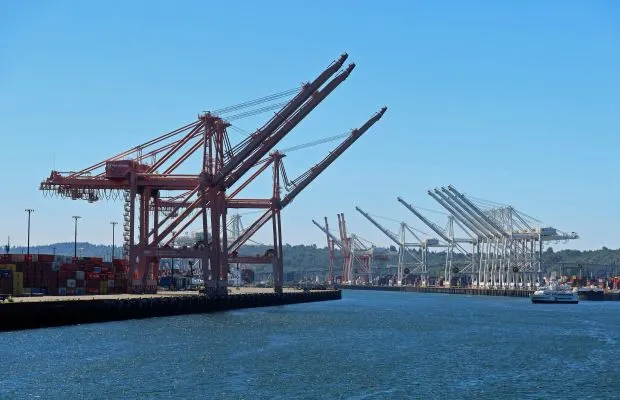How did a spy scandal helped a country finally get its boundary?
GEO-POLITICS
This country formally gained independence on 20 May 2002 becoming the first country to gain independence in 21st century. Dili is its capital and largest city. It lies in South East Asia, neighboring Indonesia and Australia in the south with Timor Sea in between. East Timor has long history of complicated relationship both the neighboring countries and which is also the reason it fought hard to gain independence.
The border between the Dutch and Portuguese parts of the Timor island was established by the Permanent Court of Arbitration in 1914 and remains the international boundary between the successor states Indonesia and East Timor. On the other hand, the boundary in the Timor Sea between Australia and East Timor was hard earned victory for East Timor.
TO THE INDEPENDENCE :EAST TIMOR
Under VOC, the Dutch colonized Indonesia before they moved towards Timor. The two colonizers’ Dutch and Portuguese fought for the control but there was no one clear winner. Instead, it was divided into two parts and a treaty was signed in 1859. Dutch controlled the West Timor which became a part of Indonesia while East Timor controlled by Portuguese became a sovereign state.
During the Portuguese control over East Timor and later Japanese took over by winning the Battle of Timor but only for a short period of time. Japanese were soon driven out Portuguese, Dutch along with Australia and Allied in 1943.
Portugal took control again though they abandoned the colony in 1975 during Portuguese Revolution and East Timor gained independence, but it was not the official independence because it was invaded again, this time by Indonesia.
Under the threat of communism, Suharto ordered to invade East Timor on 7 December 1975 while East Timor people were trying become a independent nation. Of course, UN opposed the invasion and United States supported the decision.
The relationship with Australia was dominated from before independence by disputes over the natural resources in the Timor Sea. While it was not explicit, Australia supported Indonesia became clear when it was the first one to recognize the annexation and the only one.
On 11 December 1989 Time Gap Treaty was signed by Indonesia on the zone of cooperation and Australia. According to which boundaries would be drawn by Convention on the Continental Shelf 1858, creating a ‘Zone of Cooperation’ and both states could exploit the natural resources.
Santa Cruz Massacre 1991 was one of the reasons for the change of stance of many countries like U.S though Australia’s stance remained the same and continued to support Indonesia.
Its support for Indonesia over East Timor shifted gradually over the time. Indonesia President Suharto and Australian President Paul Keating had good relationship. Newly elected Australian President John Howard government policy towards East Timor which was initially like Paul Keating suddenly changed. Mainly because Australia did not wanted to be the bad one, especially with the growing pressure after genocide.
Later Australian President John Howard sent a letter to Indonesia President suggesting him to hold a referendum without any expectations. But he was surprised when prompted by the letter, the president decided to hold referendum immediately. The international pressure along with support from United States and Indonesia did not want to spend money on maintaining its economy one of the reason for such decision.
An UN-sponsored referendum was held in 1999 where most people voted to be an independent country and United Nations took over for the transition period.
The country still needed time to be stabilized causing violent clashes prompting Australia to lead International Force for East Timor (INTERFET) to restore the order, during which bugging device was planted in East Timor in a room adjacent to Timor Prime Minister office to get information about the treaty negotiation and ensure upper hand.

AUSTRALIA AND EAST TIMOR ISSUES
Timor transitioned to independence and the relation between the two countries changed.
The drawing maritime boundary was another set of challenges as newly sovereign state East Timor had to face to get to exploit Greater Sunrise Oil field. As per Exclusive Economic Zone (EEZ) prescribed by the 1982 United States Convention on the Law of the Sea, every sovereign state has the exclusive right up to 200 nautical miles on marine resources. Therefore, overlapping Australia and East Timor economic zone.
As the Customary International Law states, the nation would have ‘started with a clean state in the matter of treaty obligations’ which meant the agreement for ‘zone of cooperation’ needed to be signed again by the East Timor to be effective. Without knowing the hidden game, the negotiation began.
Five years later in 2002, Timor Sea Treaty replaced Time Gap Treaty for the joint exploration of the Timor Sea. The treaty was to run for 30 years from the day it come into force or when sea bed boundary can be established.
Treaty on Certain Maritime Arrangements in the Timor Sea (CMATS) which restricted East Timor of establishing or engage in in any legal process related to maritime boundary until 2057 (Fifty years). This helped Australia to use oil and gas resources without worrying about maritime boundary as the large area of these sea resources were closer to East Timor coast.
The turn of events occurred when spying scandal broke out in 2012. It was revealed that listening devised was planted by Australian Secret Intelligence Service (ASIS) under INTERFET.
People of East Timor felt betrayed and Timor Prime Minister Xanana Gusmao said the treaty would be invalidated as a breach of ‘good faith’ but Australia Prime Minister didn’t agree. East Timor took the case to International Court of Justice (ICJ) in the Hague while the protest broke out in East Timor and Australian government was criticized.
Again, under the pressure and knowing the case is not in their favor, Australia agreed to renegotiate and East Timor dropped the case against Australia.
The dispute was resolved in 2018 following confederation procedures before the Permanent Court of Arbitration. The two countries signed Maritime Boundaries Treaty in 2018, establishing maritime boundary between them along with agreement on natural resources which included Greater Sunrise gas field.
Finally, East Timor had it wanted for a long time-the boundary and the right to Greater Sunrise Gas Field
Citation
Palatino, M. (December 16, 2013). East Timor-Australia Spying Scandal. The Diplomat.
Anton, D. K. (February 26, 2014) .The Timor Sea Treaty Arbitration: Timor-Leste Challenges Australian Espionage and Seizure of Document. American Society of International Law.
Gellately, R. Kiernan, B.(2003) The Specter of Genocide: Mass Murder in Historical Perspective. Cambridge University Press and Assessment.
(October 2004). Australia-Indonesia Relations: Getting Beyond East Timor. Asia-Pacific Center for Security Studies
East Timor: an Australian battleground.
Schleich, A. (September 2018).The Historic 2018 Maritime Boundary Treaty between Timor-Leste and Australia. ISPSW Strategy Series: Focus on Defense and International Security
Program Transcript – Episode 2. The Howard Years
